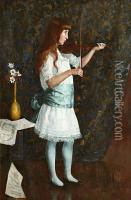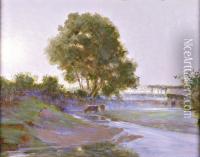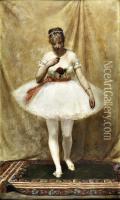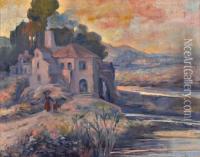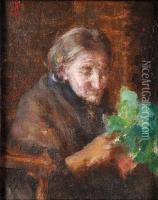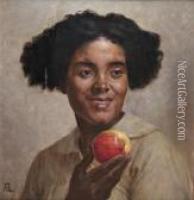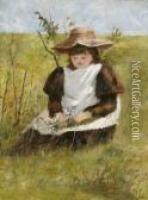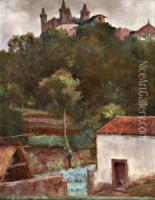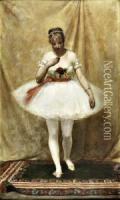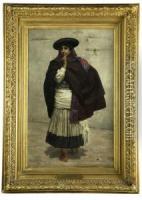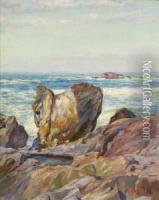Arthur Jose Souza De Loureiro Paintings
Arthur José de Souza Loureiro was a Brazilian painter known for his works that largely depicted landscapes and genre scenes. Born in São Luís, Maranhão, Brazil, on July 18, 1863, Loureiro displayed an early affinity for the arts. He studied at the Academia Imperial de Belas Artes (Imperial Academy of Fine Arts) in Rio de Janeiro, where he honed his skills and became influenced by the Romantic and Naturalist movements prevalent at the time.
In 1882, he moved to Europe, settling in Paris, which was then the hub of the art world. The city offered him exposure to the avant-garde movements of Impressionism and Post-Impressionism, although Loureiro's style remained more aligned with his academic training. In Paris, he also studied at the École des Beaux-Arts, further enriching his artistic education.
Throughout his career, Loureiro participated in several prestigious art exhibitions. He exhibited his works at the Paris Salon, an annual event that was of great importance for artists seeking recognition and patronage. His paintings during this period reflected his mastery of technique and often evoked the beauty of the Brazilian landscape, a subject that he cherished and returned to throughout his life.
Loureiro's work received recognition and he was awarded a gold medal at the Exposition Universelle in Paris in 1889. This accolade helped to solidify his reputation as a significant artist, and many of his works were acquired by art patrons and collectors across Europe.
In 1901, Loureiro returned to Brazil, bringing with him the experience and influences from his time in Europe. He continued to paint, focusing on Brazilian subjects, and became an influential figure in the local art scene. He taught at the Escola de Belas Artes (School of Fine Arts) in São Paulo and mentored a new generation of Brazilian artists.
Arthur José de Souza Loureiro's paintings are characterized by their vivid depiction of natural settings, often bathed in a soft, atmospheric light. His landscapes and genre scenes are imbued with a sense of tranquility and a deep appreciation for the beauty of the natural world.
Loureiro passed away on February 7, 1932, in São Paulo, leaving behind a legacy as one of Brazil's important landscape painters. His works continue to be celebrated for their contribution to Brazilian art history and are displayed in museums and private collections both in Brazil and internationally.

